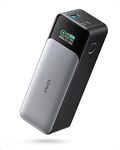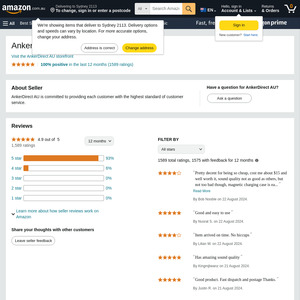This is the cheapest I have seen this Power Bank. Works great with plenty of devices including the Asus ROG Ally and Lenovo Legion Go.
Anker Power Bank, 24K 3-Port Portable Charger with 140W Output, Smart Digital Display, Compatible with iPhone 15/15 Plus/15 Pro/15 Pro Max, iPhone 14/13 Series, Samsung, MacBook, Dell, AirPods



 CamelCamelCamel
CamelCamelCamel

imuto 100w, 26800 mah for $86.46
Bugger capacity, half the price.
https://www.amazon.com.au/dp/B0B2W82T6R